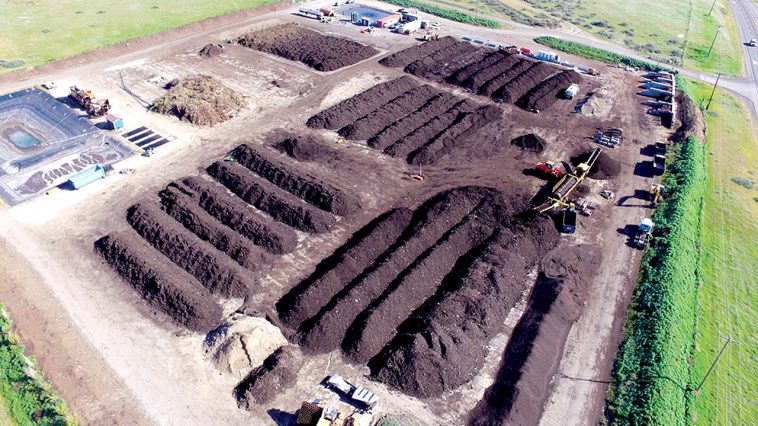NEW YORK – New Yorkers can expect to see an increase in compost bins throughout their city streets. These food scraps will find their way to a compost facility located in Staten Island, where they’ll be transformed into something rather useful. While not the gold we might generally think of, the majority of the reusable soil at this facility likely started as someone’s meal just a day prior. This includes those shredded papers you recently disposed of, as well as the grass clippings you’ll generate during the warmer months.
Here, food scraps and yard waste, which would otherwise contribute to methane buildup in landfills for decades, are turned into soil instead. New York City Department of Sanitation Commissioner Jessica Tisch explained how this so-called waste is converted into valuable material. This material is then divided into two distinct categories: landscaping and food waste.
According to the city’s Sanitation Department, between 2017 and 2021, they processed a whopping 104,000 cubic yards of dirt and 882,000 pounds of organic food waste. All of this waste goes through an impressive machine known as a ‘tiger’. The tiger has the vital task of separating out material that can be composted.
Once the compostable materials have been separated, they are compacted into walls. Some of these walls can reach heights of up to 10 feet, and they remain in place for weeks, if not months. Over time, these walls of waste are transformed into usable soil for various purposes across the city.
For Commissioner Tisch, the landfill represents New York City’s past. Meanwhile, the composting facility, along with its imminent expansion, symbolizes the city’s future. This shift towards composting and recycling is indicative of the growing awareness around environmental sustainability and responsible waste disposal.
As a result of these efforts, the city has managed to bag over 143,000 cubic yards of soil. This soil is then distributed to various locations, including schools, community gardens, homes, and other facilities. Recipients of this ‘black gold’ can further contribute to sustainable living and maintain thriving green spaces within the urban environment.
New York City’s investment in composting is a nod to the conservative principles of self-sufficiency and responsible stewardship that benefits the community as a whole. These endeavors conserve valuable resources, minimize waste, and generate useful materials for the greater good.
The process of turning waste into productive soil helps preserve the environment in many ways. Through composting, greenhouse gas emissions are reduced, and landfill spaces are conserved. Moreover, the nutrient-rich soil produced can be utilized in various applications, from parks and gardens to personal landscaping projects.
New York City’s composting program sets a precedent for other urban areas to follow suit. By embracing the importance of environmental responsibility and resource conservation, cities can promote a healthier, more sustainable future for their residents.
As more compost bins appear on city streets, New Yorkers are encouraged to actively participate in this green initiative. Properly disposing of food scraps and yard waste not only helps the environment, but it also contributes to a sense of communal responsibility and teamwork.
While skeptics may question the impact of individual efforts, the combined power of citizens working together towards a common goal cannot be underestimated. The success of New York City’s composting program is a testament to the strength of unified action in the face of environmental challenges.
The composting facility in Staten Island, along with its expansion plans, is a significant example of the city’s commitment to environmental sustainability. By investing in infrastructure that supports responsible waste disposal and resource conservation, New York City leads the way by example for other cities to follow.
The continued growth of composting programs like this one demonstrates the importance of aligning with conservative values of resourcefulness, efficiency, and self-sufficiency. With these principles at the core, even the largest cities can work towards a more sustainable future.
Through the combined efforts of city officials, sanitation workers, and New York City’s citizens, valuable materials such as soil can be generated from waste that would otherwise sit in landfills for decades. This localized solution not only helps the environment but also fosters a sense of pride and accomplishment within the community.
As composting operations continue to expand in New York City and beyond, it is crucial for residents to embrace the responsibility that comes with this environmental initiative. By working together, individuals can make a collective impact on the city’s sustainability efforts and ensure a greener, brighter future for generations to come.


